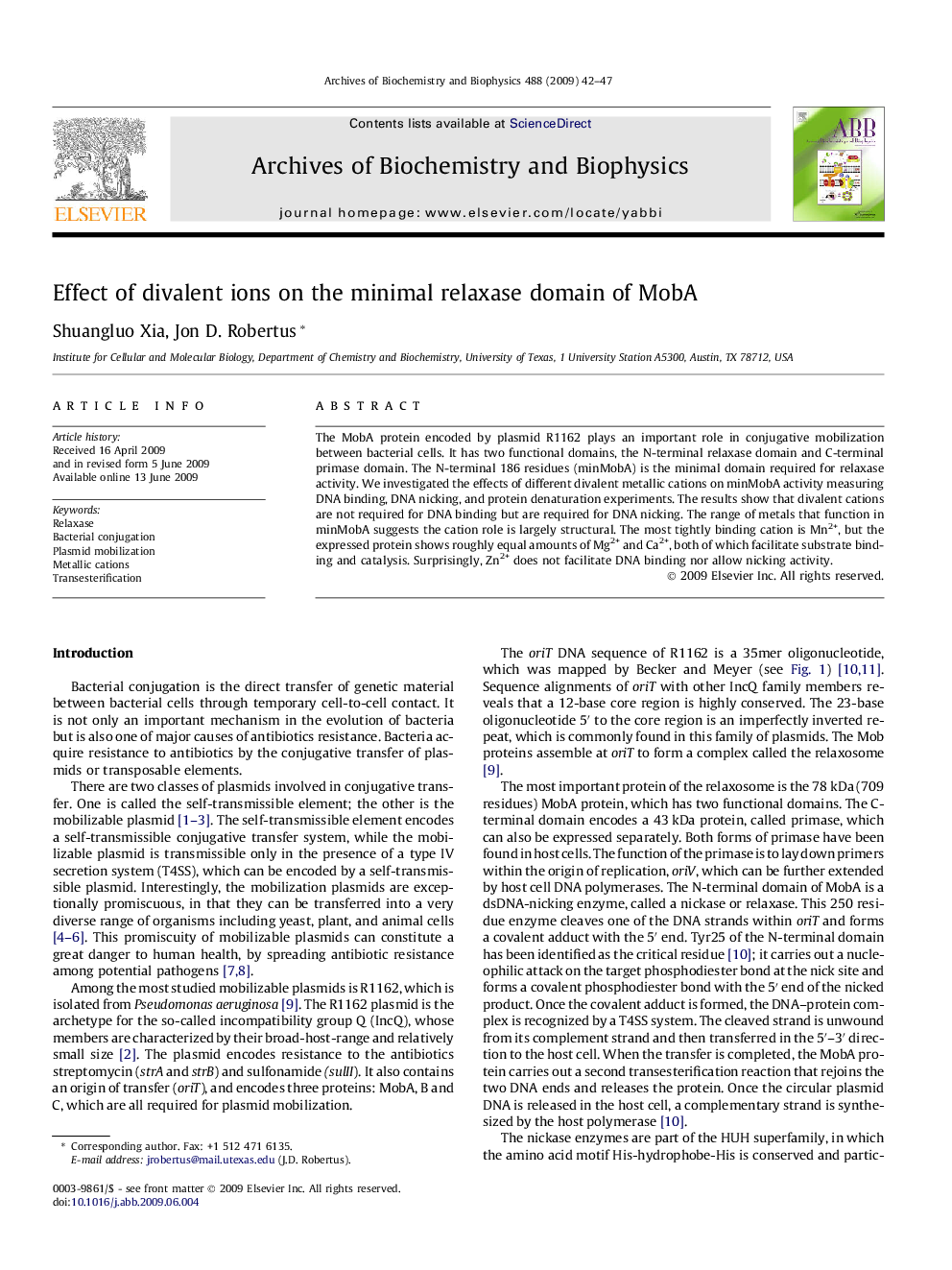| Article ID | Journal | Published Year | Pages | File Type |
|---|---|---|---|---|
| 1926324 | Archives of Biochemistry and Biophysics | 2009 | 6 Pages |
Abstract
The MobA protein encoded by plasmid R1162 plays an important role in conjugative mobilization between bacterial cells. It has two functional domains, the N-terminal relaxase domain and C-terminal primase domain. The N-terminal 186 residues (minMobA) is the minimal domain required for relaxase activity. We investigated the effects of different divalent metallic cations on minMobA activity measuring DNA binding, DNA nicking, and protein denaturation experiments. The results show that divalent cations are not required for DNA binding but are required for DNA nicking. The range of metals that function in minMobA suggests the cation role is largely structural. The most tightly binding cation is Mn2+, but the expressed protein shows roughly equal amounts of Mg2+ and Ca2+, both of which facilitate substrate binding and catalysis. Surprisingly, Zn2+ does not facilitate DNA binding nor allow nicking activity.
Related Topics
Life Sciences
Biochemistry, Genetics and Molecular Biology
Biochemistry
Authors
Shuangluo Xia, Jon D. Robertus,
